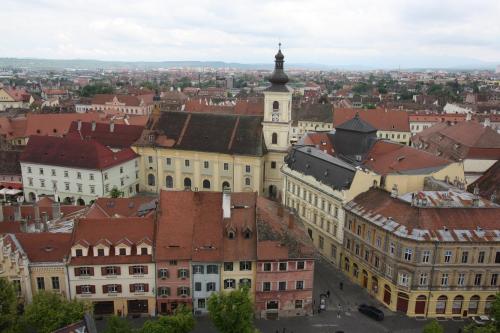
View from the Evangelical Cathedral tower. Photo by Richard Varr
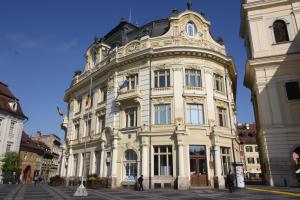
Baroque-style City Hall. Photo by Richard Varr
Step into the streets of Sibiu and you’ll be questioning yourself as to whether you’re actually in Romania. From the central town square, I look around and see the Baroque architecture of the rounded City Hall, green-tinted Brukenthal National Museum and the whitewashed façade and Baroque tower of the Roman Catholic Church, and it seems like I’m in Saxony or Austria. The Baroque style is rooted from settlers to Sibiu who came from Saxony and other parts of Germany as far back as the 12th century.
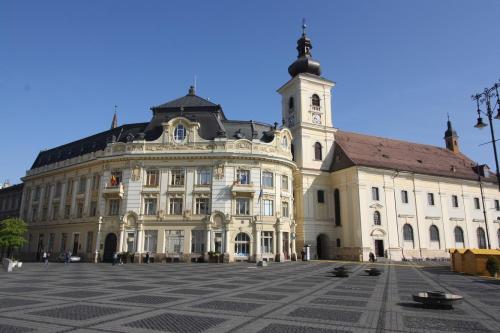
City Hall and Roman Catholic Church. Photo by Richard Varr
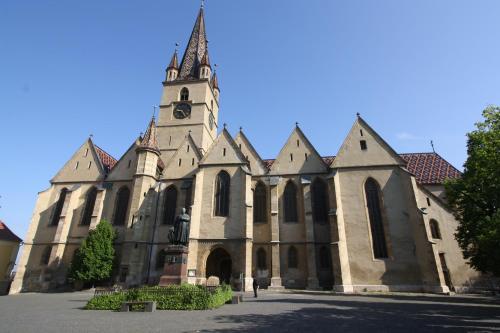
Evangelical Cathedral. Photo by Richard Varr
“The most interesting change for Sibiu took place in the 18th century when it followed the path of the Baroque style and can be considered a Baroque town, without missing the medieval elements,” says guide Peter Suciu. And Sibiu’s medieval past lives on with the Council or Town Hall Tower dating back to the 14th century. Visitors can climb this tower to the top for views of the city’s two main squares below. There’s also the rounded Draper’s Tower, the bulwark Potters’ and Carpenter’s Towers along the old City Walls, all dating back to the 14th through 16th centuries. Others include the Thick Tower and the Gunpowder and Leather Merchants’ Towers.
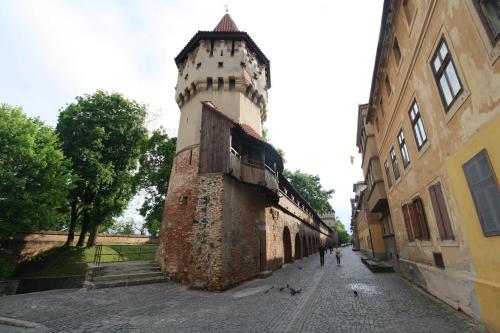
Carpenters’ Tower and the Old Town Walls. Photo by Richard Varr
The so-called “Lies’ Bridge” is Romania’s first cast iron bridge. Often dotted with potted flowers, the 1859 bridge, also called the Iron Bridge, got its name from legend claiming the bridge will crumble if a lie is told on it. Other folklore includes how young girls would arrange dates with soldiers on the bridge – dates which were never followed through. Must-see churches include the Evangelical Cathedral, dating back to the 14th century, where multiple stairwells lead up the central tower to commanding views of the city. The splendid nave of the high-domed and two-towered Holy Trinity Orthodox Cathedral, built in the early 20th century, is emblazoned with impressive icons and a gold-tinted alter.
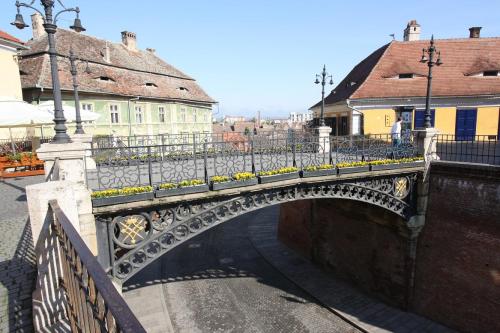
Lies’ Bridge. Photo by Richard Varr
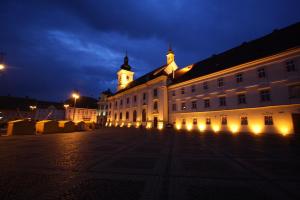
Central square at nightfall. Photo by Richard Varr
The Brukenthal Museum, once the palace of 18th century Transylvania Governor Baron Samuel von Brukenthal, today houses Romanian and European art, paintings and sculptures. On the outskirts of Sibiu, the Museum of Traditional Folk Civilization is Romania’s largest open air museum with homesteads and churches from throughout the country – similar to the National Village Museum in Bucharest.

Thanks for this very historically p;insightful and beautiful journey of Romania.
Hi Mario, thanks for following my blog! Great to hear from you.